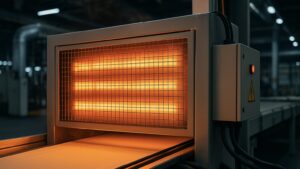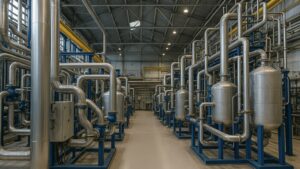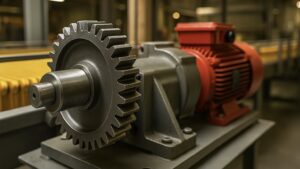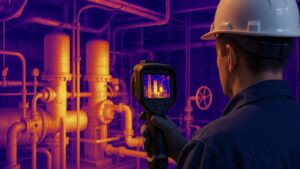The increase in energy demands and demand for data brings several challenges for data centers. These demands can no longer be completed through cooling systems that are conventional. Evaporative technologies in data centers come out as an effective solution in such a situation.
What is evaporative technology in a data center you ask? It is an effective and efficient method of cooling data centers using the advantage of water evaporation. The technology is less energy-consuming than conventional ones making it good at reducing operational costs and energy footprint. Additionally, evaporative technologies in data centers employ less hazardous refrigerants and have a smaller carbon footprint. So, they are environmentally friendlier.
This article thoroughly examines evaporative technologies for data centers including their means, advantages, and other factors.
Evaporative Cooling Techniques: Direct, Indirect, and Hybrid
Data center managers can choose from a variety of evaporative cooling methods, each having pros and downsides of its own:
Direct Evaporative Cooling
This technique uses warm air through a wet medium such as a porous pad or water spray. This water vapor cools the air as it evaporates. After that, the data center receives direct circulation of this cooled air. It offers a cooling solution that is both pleasant and energy-efficient. Moreover, dry areas are especially well-suited for direct evaporative cooling. This is because the low humidity levels there maximize cooling capacity.
Indirect Evaporative Cooling
Indirect evaporative cooling systems avoid bringing cooled air into the data center directly. It uses a secondary airstream to speed up the cooling process. Furthermore, this method involves passing the heated air from the data center. This is via a heat exchanger and cooling it with an evaporatively cooled secondary airstream. Moreover, this technique is more suited for humid conditions where direct evaporative cooling might not be as successful. This is due to its role in preserving the distance between the cooled and uncooled airstreams.
Hybrid Evaporative Cooling
Hybrid evaporative cooling systems combine the advantages of direct and indirect cooling techniques. Furthermore, these systems usually employ an indirect stage after an initial direct evaporative cooling stage. It lowers the air temperature and maintains the appropriate humidity levels Regardless of the local environment, hybrid systems provide more flexibility. Additionally, it adapts to the specific cooling requirements of a data center.
The Advantages of Evaporative Technologies in Data Centers
Evaporative technologies in data centers are among the most appealing forms of cooling. This is because of their sustainable characteristics of reducing operating costs and increasing energy efficiency. Let us know about its advantages in depth:
Energy Efficiency and Cost Savings
Evaporative technologies in data centers are characterized by exceptional energy efficiency. This means that evaporative coolers consume much less power than a typical refrigerant-based cooling system. They also reduce the amount of electricity spent on cooling within a data center by over 50%. All of this makes evaporative cooling very attractive to any Data Center operator who is looking for ways to maximize his/her profit margins.
Sustainability and Environmental Benefits
Evaporative technologies in data centers are really good for the environment. Instead of using harmful chemicals like hydrofluorocarbons to cool things down, it uses evaporation. This helps reduce carbon emissions and encourages others to use sustainable methods in data centers. Additionally, It is more environmentally friendly as it uses water as a source for cooling. This concept falls in line with the emphasis on sustainable water use and responsible management of resources.
Suitability for Dry Climates
The efficacy and efficiency of evaporative cooling systems have a high influence on the surrounding environmental factors. Evaporative cooling systems work best in dry places because of the low humidity. It facilitates rapid and effective water evaporation. So, it significantly reduces temperature.
Evaporative Technologies in Data Centers: Challenges and Limitations
Although evaporative technologies in data centers have several benefits, data center operators need to be aware of the following drawbacks and obstacles:
Humidity Management
The efficiency of evaporative cooling reduces under humid conditions that is due to an increased moisture content in the air which slows down the evaporation rate. In case of such conditions, data center managers will be forced to raise dehumidifying options or hybrid cooling methods. It blends evaporative cooling with typical refrigeration-based cooling systems.
Water Consumption and Treatment
Evaporative cooling systems depend on a continuous supply of water for continued operation. This use of water might be problematic in areas with scarce water supplies or expensive water bills. Water usage needs close monitoring by data center operators who should also install water treatment as well as recycling systems. It helps minimize the impact on the environment and operational costs.
Scalability and Reliability
Technical difficulties might arise with scaling evaporative cooling systems. This is to meet the increasing cooling requirements of contemporary, high-density data centers. It is important to guarantee the dependable and uniform functionality of these systems. Any disturbances in the cooling procedure may have dire repercussions for the data center’s functions.
Advancements in Evaporative Technologies in Data Centers
Manufacturers have been actively working to improve the performance, dependability, and applicability of the technology for data center applications by creating creative design solutions that solve the drawbacks and limits of evaporative cooling systems.
Integrated Dehumidification and Moisture Control
Some evaporative cooling systems now include integrated dehumidification capabilities. It helps with the problem of managing humidity in humid locations. Moreover, these systems ensure that the appropriate humidity levels are maintained for the best cooling performance. It removes the excess moisture from the air using mechanical or desiccant-based dehumidification methods.
Hybrid Cooling Configurations
Hybrid cooling solutions are the result of combining evaporative cooling with conventional refrigerant-based cooling systems. The reliability and climate-independent performance of refrigerant-based cooling are retained. Moreover, the energy efficiency and sustainability advantages of evaporative cooling in data centers are supplemented by these systems. Data center managers can adjust the cooling plan using hybrid setups to the unique environment and operating needs of their buildings.
Intelligent Control and Automation
Intelligent evaporative cooling systems are a product of sensor technology, data analytics, and control algorithm developments. These systems use sophisticated monitoring and control features, modifying various elements. It includes water flow, air velocity, and evaporative media wetting in response to current circumstances. It helps to maximize the cooling process. Furthermore, evaporative cooling in data centers performs best when it is automated and optimized to this degree. It maximizes its energy efficiency, dependability, and overall performance.
Water Management and Conservation Strategies
Data center operators are using cutting-edge water management techniques and technology. This is to solve the problems with evaporative cooling’s water use. These include recirculation and water treatment systems. These systems by filtering, treating, and recycling the water used in the cooling process, can drastically reduce overall water use. Furthermore, evaporative cooling systems may be made even more sustainable. This is by using non-potable water or rainwater collecting, among other alternative water sources.
Reliability and Redundancy Considerations
Operators of data centers need to establish strong redundancy mechanisms and maintenance routines. It guarantees the evaporative cooling systems’ consistent and dependable performance. Furthermore, this might entail the deployment of many cooling units. It can also include the deployment of standby power supplies and extensive monitoring and control systems. It helps to identify and address any possible malfunctions or interruptions. Additionally, data center operators may reduce the risk of cooling system failures and guarantee the uninterrupted functioning of their vital IT infrastructure by placing a high priority on dependability.
To Sum Up
The sustainability concerns and energy demands push the data center industry to come up with innovative solutions. Evaporative cooling technologies have resurged as a promising technique to cool efficiently. In this article, our goal was to give you everything you need to know to begin using evaporative technologies in data centers.
If you’re interested in learning about new ideas and ways to save energy in data centers, the Energy Efficiency for Data Center Summit is perfect for you. It’s happening on May 16-17, 2024 in Dallas TX, USA. At this event, you’ll find informative sessions, real-world examples, chances to meet others in the field, and much more, led by experts in the industry. Find out more about this opportunity and sign up now!





